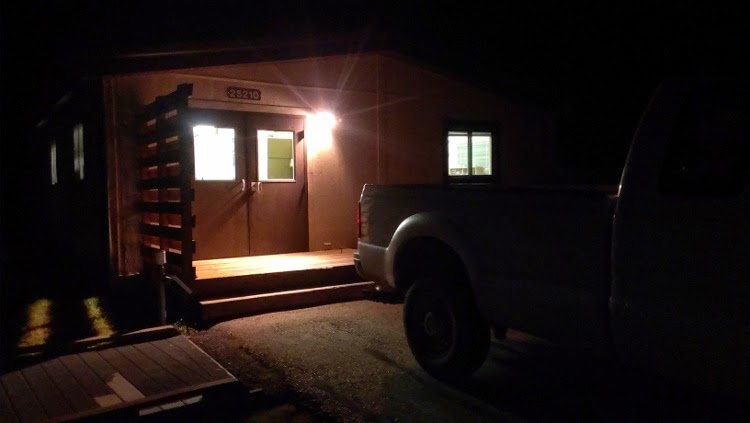Badlands National Park Day 16
A few things about black footed ferrets. BFFs are one of the most endangered animals in North America. They were thought to be extinct until a small population was discovered in Wyoming in 1981. At one point the known living population was down to just 18 animals. After years of efforts with captive breeding and releasing animals into the wild, the population has been on the rise. Here at Badlands, a new blow was dealt in 2007/8 when the plague arrived. Affecting small mammals such as prairie dogs, which ferrets rely on as a food source, the population here plummeted from something around 330 animals to around 30. After this week's trapping efforts, the current population in the park is estimated at 30-40 individuals. Ferrets live underground in abandoned prairie dog holes, and feed primarily on prairie dogs. These small animals manage that by feeding at night when the prairie dogs are asleep. When you see the sizes of these two animals next to each other, it seems like quite an accomplishment on the part of the ferrets.
A favorite story from the night: when a couple of us were releasing the first few ferrets (we caught 5 all night), one of the little guys did not predictably run down into his hole. Instead, he came out of the kennel, looked around, and took off in the opposite direction. We followed him as he ran, a challenging thing in the middle of the night with just a headlamp. After a bit there was a little splash, and then a patterned splashy sound: he ran into the dam and swam all the way across! We could see him, but there was no chance for photographs. Everyone was astounded when we told them what happened, especially since it was a chilly 34 degrees out. Hoping he's okay.
I could say so much more about these fascinating animals. If you would like to read more or are interested in contributing to research and support efforts, visit this site: http://www.prairiewildlife.org/ This organization was started by Travis Livieri, a biologist who worked here at Badlands while studying the ferrets for his masters degree. Travis was here this week with his mobile lab to work with the population here in the park.
I made it back to park headquarters at about 10am, and had breakfast with a friend while planning a group hike to Harney Peak for tomorrow. I then slept much of the day, had dinner with friends, and then we sat around a fire for the evening, enjoying the calm air.
 |
| Loading up at the zoo (wildlife ecology building) |
 |
| Getting prepped in the field |
 |
| First ferret spotlighted |
 |
| Peeking out to see what's happening |
 |
| Inserting a trap |
 |
| Trap and reflector set |
 |
| Transferring a trapped ferret into a transport tube |
 |
| Inside the mobile lab |
 |
| Anesthetizing a ferret |
 |
| Combing for fleas |
 |
| Passed out and ready for vaccines |
 |
| In a kennel and awake again |
 |
| Releasing back to its hole |
 |
| Checking things out: ferrets are very curious |
 |
| Sunrise |
 |
| Heading to the mobile lab with the last batch of ferrets |
 |
| Working on an anesthetized ferret |
 |
| Still asleep, ready to be weighed (they are so small they are weighed in grams) |
 |
| Ready to go back home |
 |
| Each ferret is different: this one took his time getting back into his hole |
 |
| Heading for the hole |
 |
| One the way in |
 |
| Spotted this coyote stretching, with the now active prairie dogs |
 |
| Getting ready to release another ferret |
 |
| The door is open! |
 |
| Trotting back to the hole |
 |
| Getting close |
 |
| Almost there |
 |
| A leaping ferret - they sometimes play in the morning before settling in to sleep |
 |
| Out for a walk, exploring |
 |
| Checking us out |
 |
| Park rig with mounted spotlight |
 |
| A view on the drive back to park headquarters |
 |
| Sunset |
 |
| Sunset |

Comments
Post a Comment